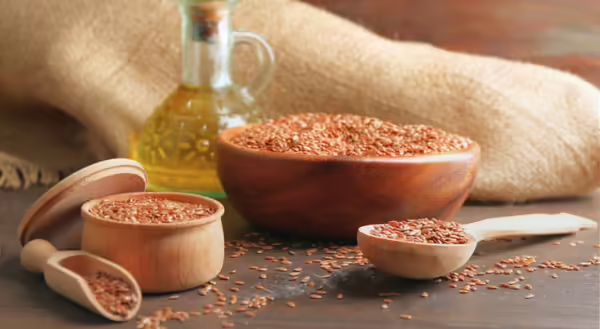
We’ve been told that flaxseed is good for us, but what exactly is it, and what do I do with it? Flaxseed is the seed of the flax plant. It’s an annual plant with green leaves and generally has either pale blue or bright red flowers. The fruit of the plant is a dry round capsule, which contains the tiny brown flaxseeds.
But our bodies can’t digest whole flaxseeds very well, and therefore, we need to grind flaxseed to provide maximum nutrition benefits. Whole flaxseed may be found in most grocery stores and can be ground in a coffee grinder. Alternatively, flaxseed can also be bought already ground, which is a convenient option for those that don’t want to grind it themselves.
Ground flaxseed has been touted as a nutritional powerhouse. It is a whole grain and a good source of dietary fiber (just 2 tablespoons has 4 grams of fiber). It also has large amounts of omega 3 fatty acids, as well as the natural antioxidant, lignan. Because of these things, some health professionals and researchers say that flaxseed can help reduce the risk of heart disease and certain cancers.
Since flaxseed does contain fat, it may become rancid after time, and therefore should be kept in the refrigerator once opened to preserve its freshness. Ground flaxseed has a nutty flavor and can be added to cold or hot cereal, breads and muffins, or pancakes. Try adding it to hot pasta, granola, or grind up whole flaxseeds and make pesto. Give flaxseed a try, and you’ll enjoy all its health benefits and great taste.
About the Author
Jenna Smith is a Nutrition and Wellness Educator with University of Illinois Extension, serving Livingston, McLean, and Woodford Counties. Smith uses her experience as a registered dietitian nutritionist to deliver impactful information and cutting-edge programs to Livingston, McLean, and Woodford Counties and beyond.
